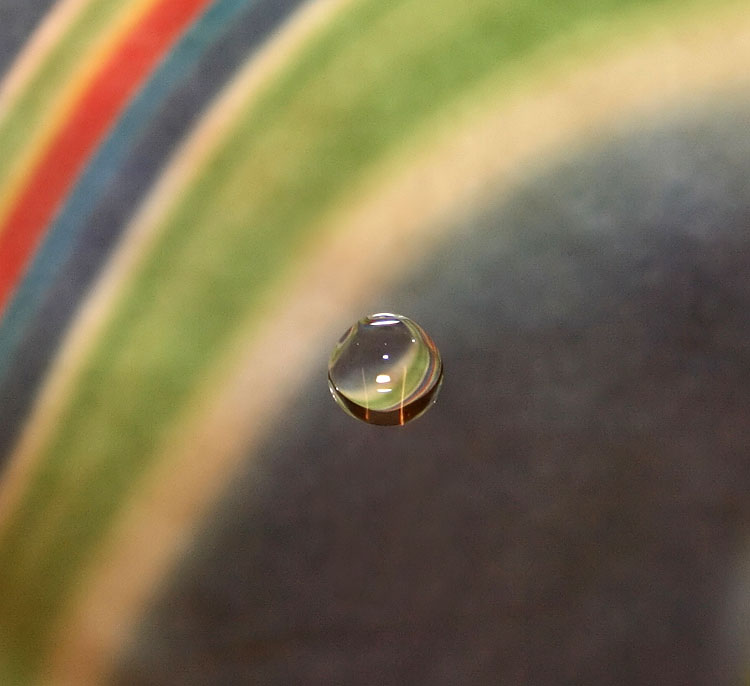
⇍ December 9th, 2007 ⇏

This weekend the Waterloo Concert Band had our Christmas Concert! It was a lot of fun, and I'd like to thank everyone who came out to see it! I didn't take any pictures, because I was too busy with band stuff, but that's OK.
Instead, I had some free time on Saturday evening, so I decided to try an experiment. I have wanted to try my hand at some motion-freezing photography for a while now, so this was my chance.
To freeze motion, common wisdom suggests that you need to make your shutter speed as fast as possible. This is true, up to a point. Faster shutter speeds help freeze motion, but they don't freeze really fast moving objects, and also when your shutter is only open for 1/4000th of a second, you really don't get very much light entering the camera. So, using the fast shutter method is only really useful for freezing moderately fast moving brightly lit objects.
For other situations, the flash comes to the rescue. You see, at low power a typical flash burst can be as short as 1/30000th of a second. That's great for freezing just about anything. Also, the flash provides its own light, so you can shoot in a completely dark room and still get a brightly lit photo.
So, I decided to give it a try and photograph some water droplets. For this photo I set up my camera by the bathroom sink, and opened the tap just enough to get a regular drip going. Then I put a nice coloured backdrop so that there would be something interesting in the background. I had to use manual focusing, which I did by holding my finger where the drops were coming down and focusing on the tip of my finger. I picked my camera settings to favour a small depth of field, low noise, and such that if I took a photo without the flash, the scene would basically come out black.
Then, I waited and tried to get a feel for the timing of the drops, and then took a series of photos hoping to catch a drop in mid flight. I got quite a few that worked out well! This is the best of the bunch, I think.
In the future, it would be nice to try this with an actual macro lens. The only lens I have that even comes close to being suitable for macro work is the kit 18-55mm lens, because it has a minimum focusing distance of only 10 inches, which is good, but not quite good enough to get in close to a water droplet. As such, I had to heavily crop this picture to get the water drop to be a decent size.
Anyway, it was a cool experiment!
Technical details: This photo was taken with my Rebel XT + Speedlite 430EX flash + kit lens at 55mm, ISO 100, f/5.6, for 1/60th of a second.
Oh my god! Fabulous photograph. Award winning potential here. I love it!-- Chad at 10:31pm, Tuesday December 11, 2007 EST
Neat!-- Alix at 11:25pm, Tuesday December 11, 2007 EST
Man, that is seriously cool. I love the colors. This is inspiring, gonna have to try this out myself.-- Aravind at 1:08am, Wednesday December 12, 2007 EST
Thanks everyone! If you want to see something really neat, here is my inspiration: http://www.flickr.com/photos/lordv/292955445/ I also saw a photo where someone had put an upside down map of the world in the background, so the water droplet wound up looking like a miniature Earth! I wish I could find that photo again... I guess I will just have to try and reproduce it one day!-- Michael at 9:54am, Wednesday December 12, 2007 EST
ooooo.. reflective spheres, I might have to paint this.-- Sue at 5:35pm, Thursday December 13, 2007 EST
Hosted by theorem.ca